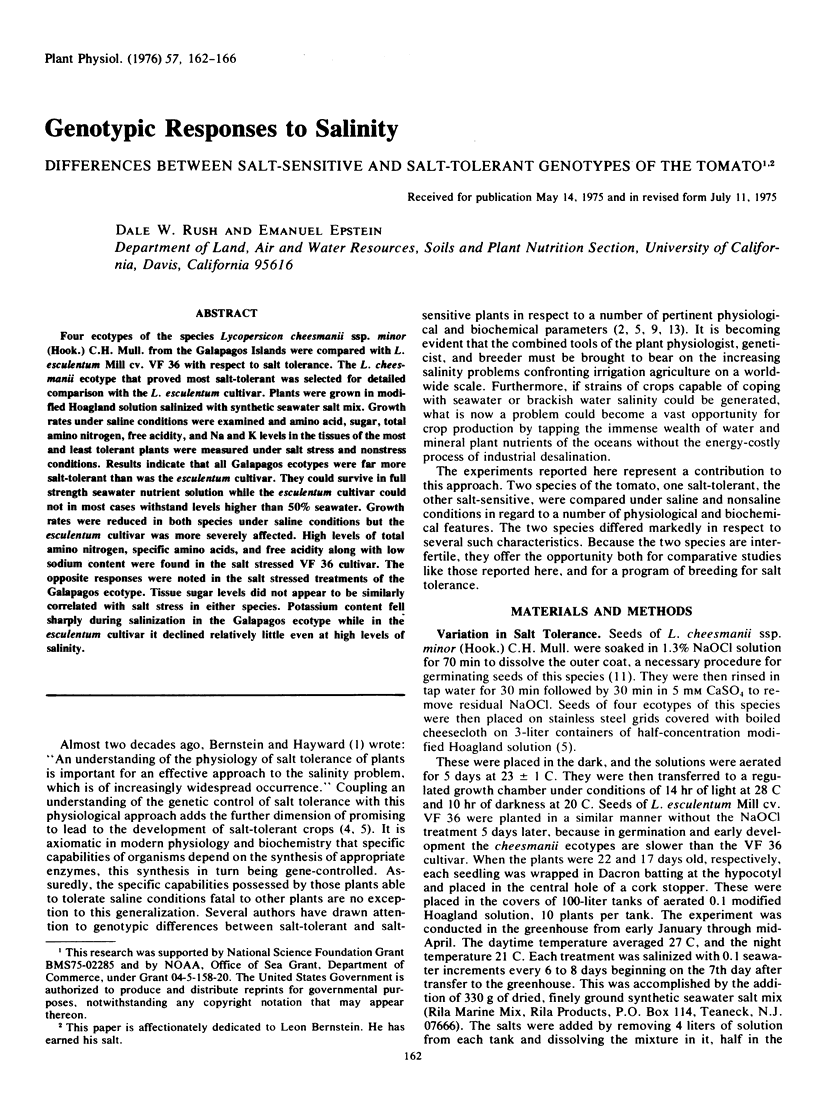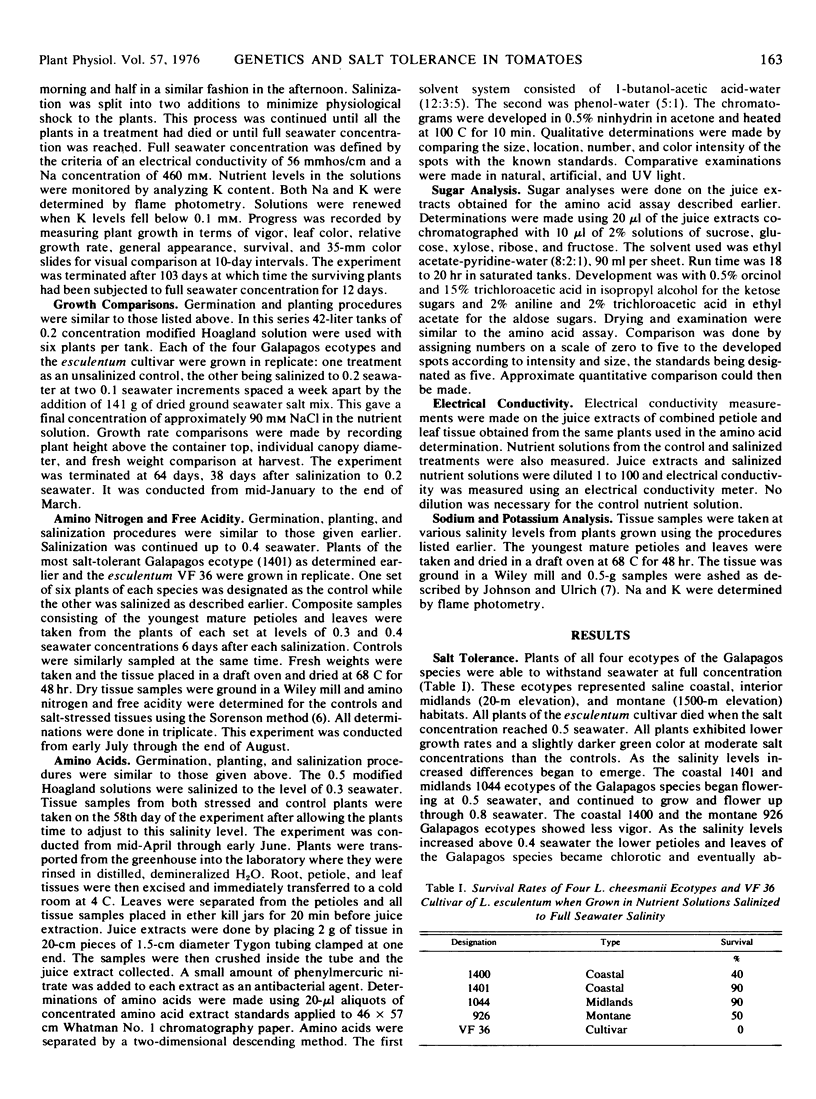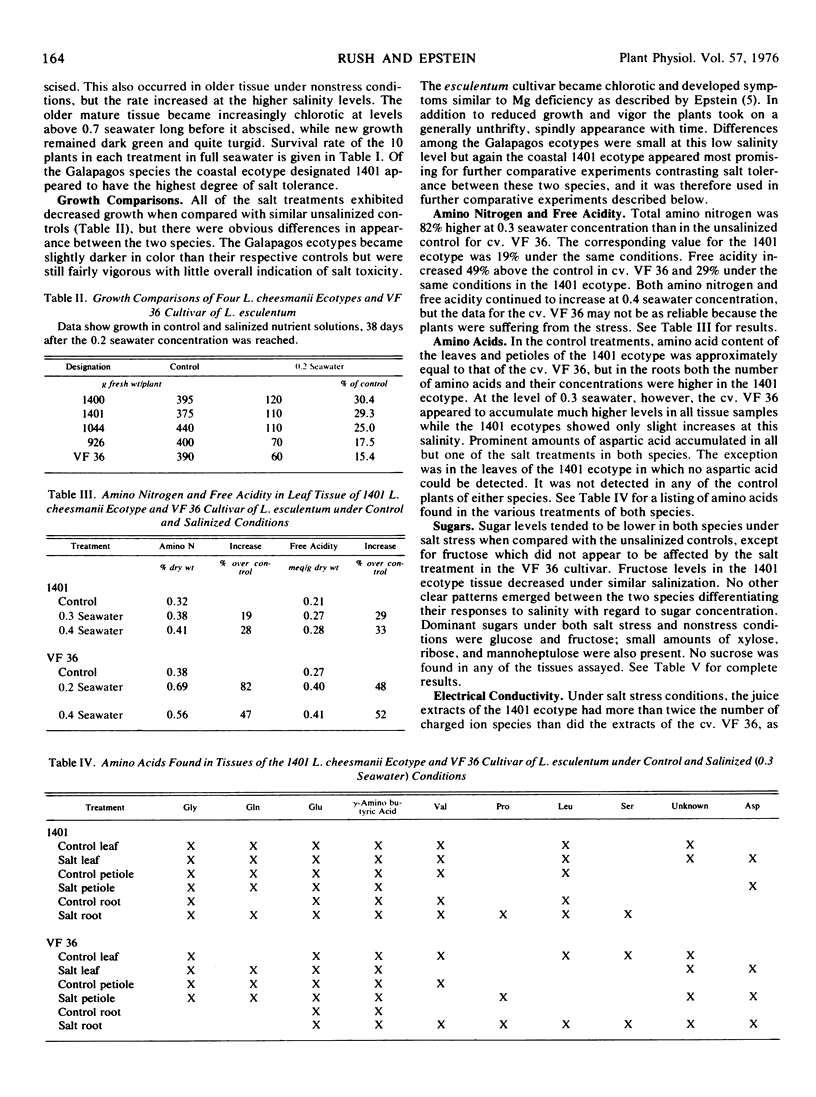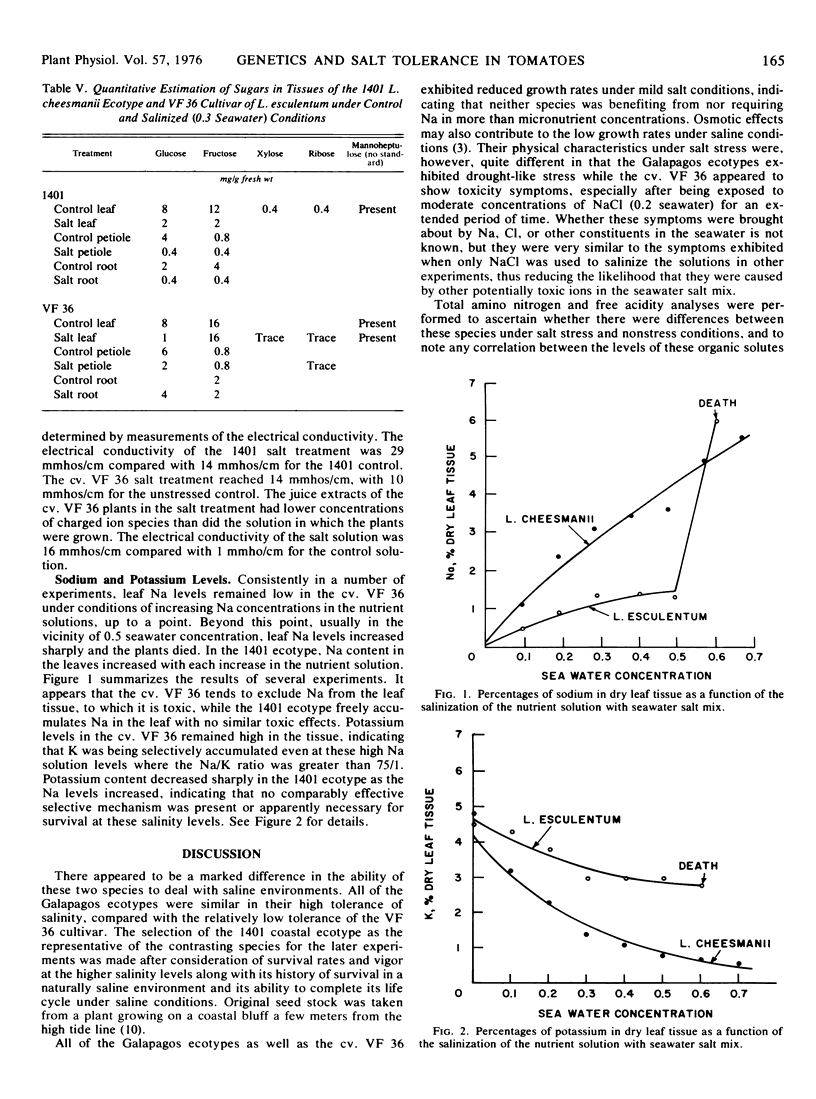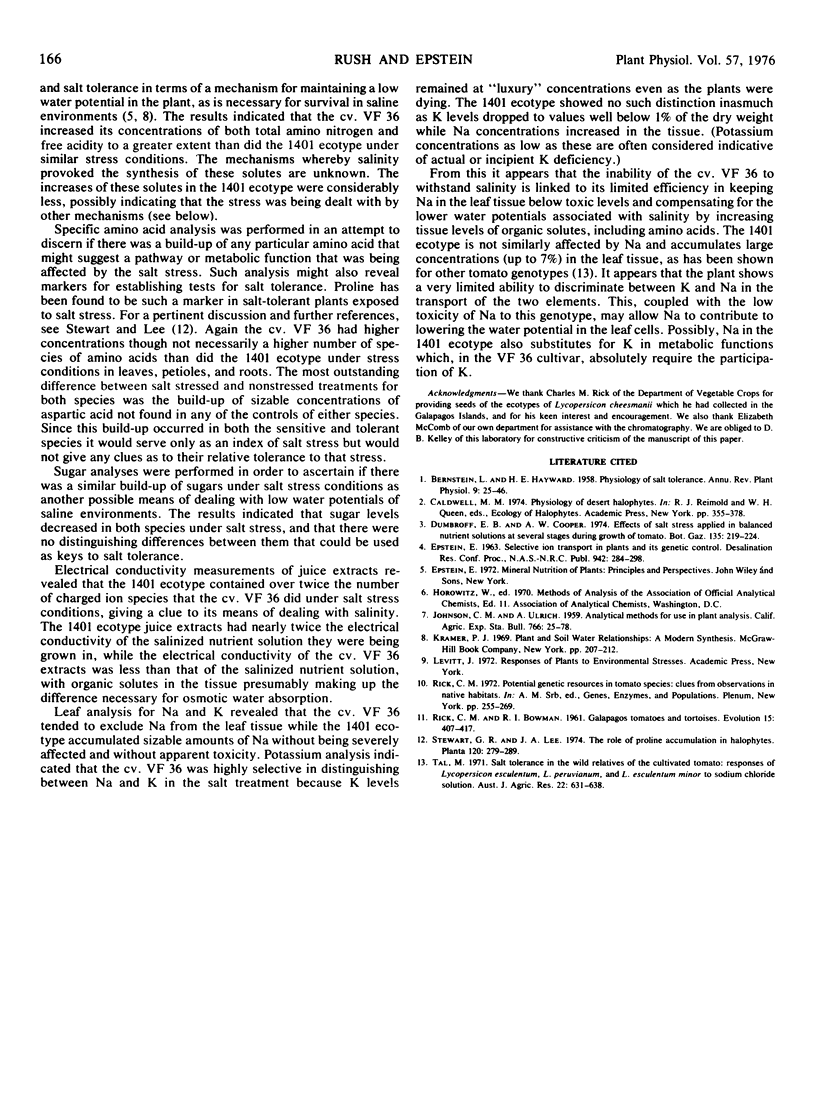Abstract
Four ecotypes of the species Lycopersicon cheesmanii ssp. minor (Hook.) C.H. Mull. from the Galapagos Islands were compared with L. esculentum Mill cv. VF 36 with respect to salt tolerance. The L. cheesmanii ecotype that proved most salt-tolerant was selected for detailed comparison with the L. esculentum cultivar. Plants were grown in modified Hoagland solution salinized with synthetic seawater salt mix. Growth rates under saline conditions were examined and amino acid, sugar, total amino nitrogen, free acidity, and Na and K levels in the tissues of the most and least tolerant plants were measured under salt stress and nonstress conditions. Results indicate that all Galapagos ecotypes were far more salt-tolerant than was the esculentum cultivar. They could survive in full strength seawater nutrient solution while the esculentum cultivar could not in most cases withstand levels higher than 50% seawater. Growth rates were reduced in both species under saline conditions but the esculentum cultivar was more severely affected. High levels of total amino nitrogen, specific amino acids, and free acidity along with low sodium content were found in the salt stressed VF 36 cultivar. The opposite responses were noted in the salt stressed treatments of the Galapagos ecotype. Tissue sugar levels did not appear to be similarly correlated with salt stress in either species. Potassium content fell sharply during salinization in the Galapagos ecotype while in the esculentum cultivar it declined relatively little even at high levels of salinity.
Full text
PDF